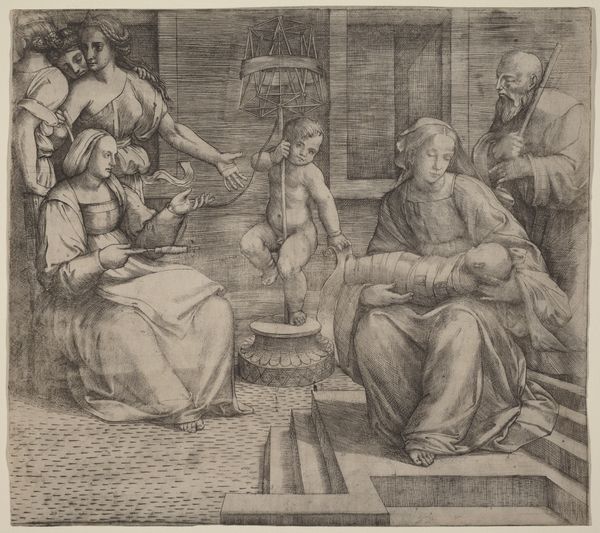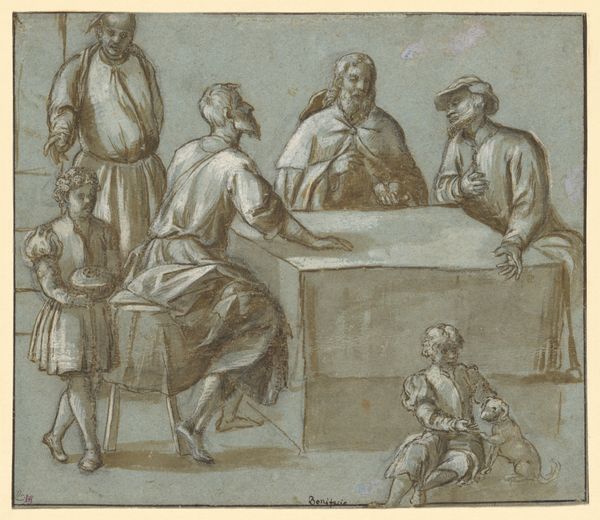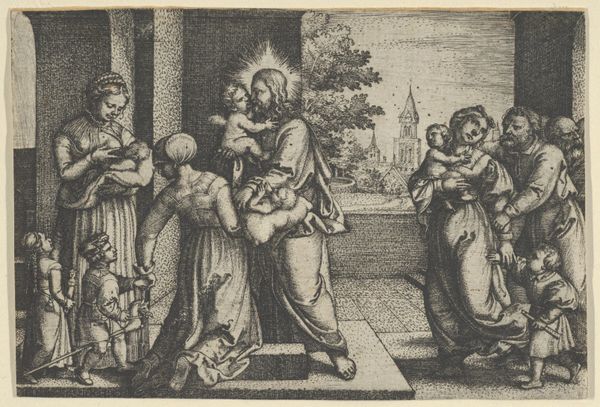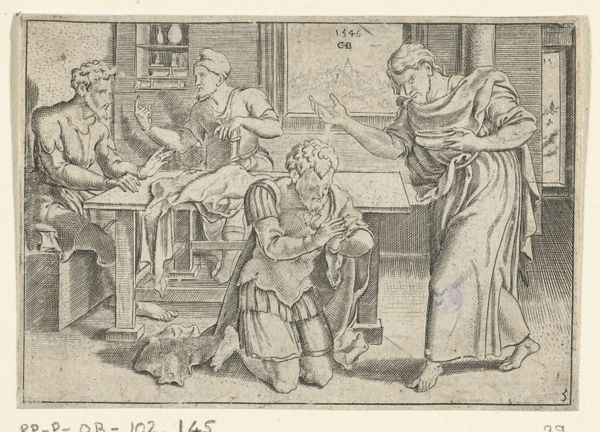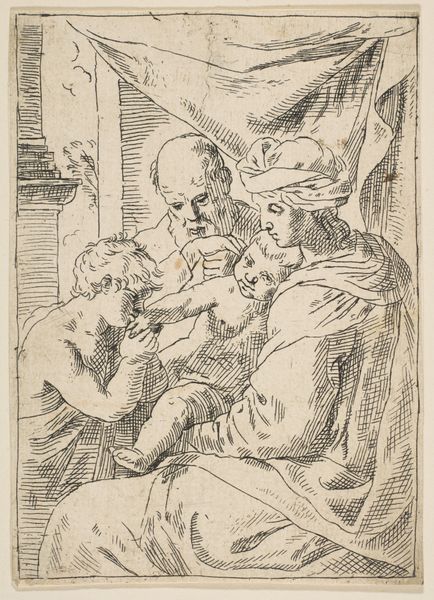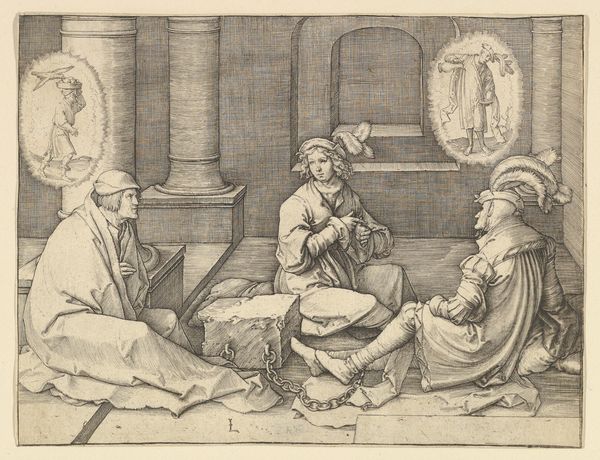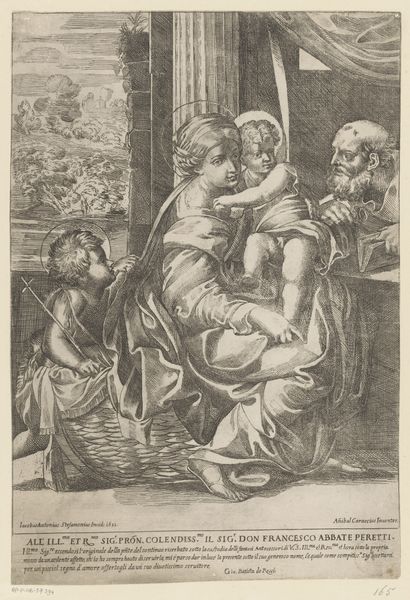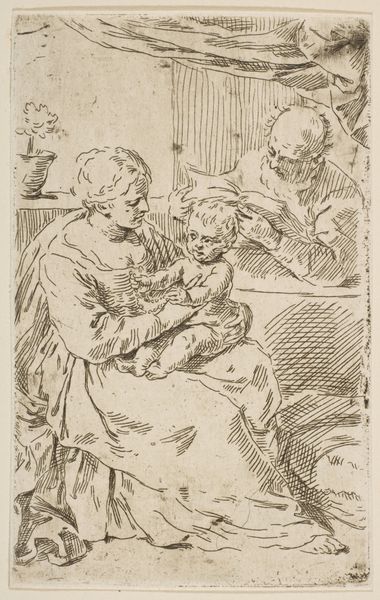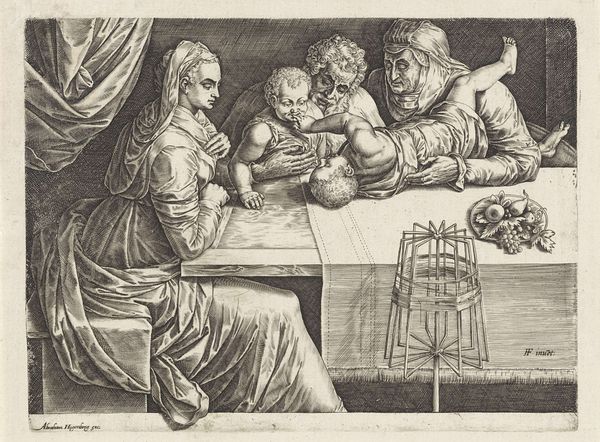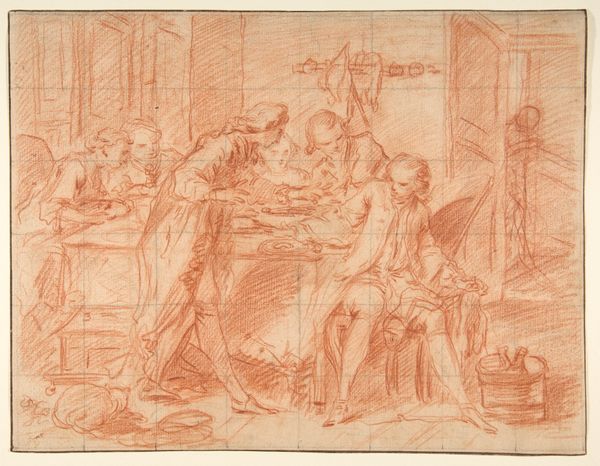
Saint John the Baptist in Prison Sends His Disciples to Question Jesus 1598 - 1616
0:00
0:00
drawing, tempera, paper, ink
#
drawing
#
narrative-art
#
tempera
#
mannerism
#
figuration
#
paper
#
11_renaissance
#
ink
#
history-painting
#
italian-renaissance
Dimensions: sheet: 5 3/8 x 11 1/16 in. (13.7 x 28.1 cm)
Copyright: Public Domain
Curator: Let's discuss this Mannerist drawing attributed to Ermenegildo Lodi, created sometime between 1598 and 1616. It's titled *Saint John the Baptist in Prison Sends His Disciples to Question Jesus*. It's rendered in tempera, ink, and wash on paper. Editor: Hmm. My initial reaction is one of restraint, both literally and figuratively. The barred window dominating the scene immediately suggests confinement, not just physical but perhaps intellectual or spiritual, too. Curator: Precisely. The prison bars act as a powerful visual symbol, don't they? They represent John's constrained physical state but also hint at the limitations of earthly knowledge. Remember, John is wrestling with doubt here; he needs confirmation of Jesus's identity. The bars then can speak to the doubts that can imprison us, even the most devout. Editor: I like that—the imprisoned doubt. And the grey wash emphasizes that sense of spiritual uncertainty; the figures seem shrouded in a kind of existential fog. It makes the whole scene feel less like a declaration of faith and more like an intimate, questioning moment. I see a line going all the way to Gethsemane. Curator: That’s a very insightful connection. It’s crucial to observe the carefully orchestrated composition, divided into two distinct spatial zones. We see John in his dark cell, a confined, intimate space. Then there's a burst of landscape in the back showing the disciples going out to spread their teachings. This separation reinforces John’s isolation, his physical removal from the burgeoning movement he prophesied. Editor: Absolutely, it's like two different dimensions unfolding. And yet, look at how Lodi uses the line of their gazes to connect these spaces, a faint beam of hope piercing through that somber tone. Those long robes everyone is wearing also reinforce that feeling; you could say they are wearing their doubt, dragging it around. Curator: The drapery does speak to the prevailing Mannerist style and those robes do play a role in communicating solemnity, which leads me to a more human, more immediate reading of the scene. In their questions to Jesus, John isn't seeking divine proof, so much as wanting encouragement from Jesus: he wants to be seen, and recognized by Jesus before his demise. Editor: You know, stepping back, what's striking is that we're still grappling with the same questions centuries later, albeit framed differently. The doubts, the confinement, and the quiet desperate longing to be recognized – it's all eternally human. Curator: Indeed. This drawing transcends its biblical context. It allows for such powerful and ongoing resonances, doesn’t it?
Comments
No comments
Be the first to comment and join the conversation on the ultimate creative platform.
